#Akelei Art
Text
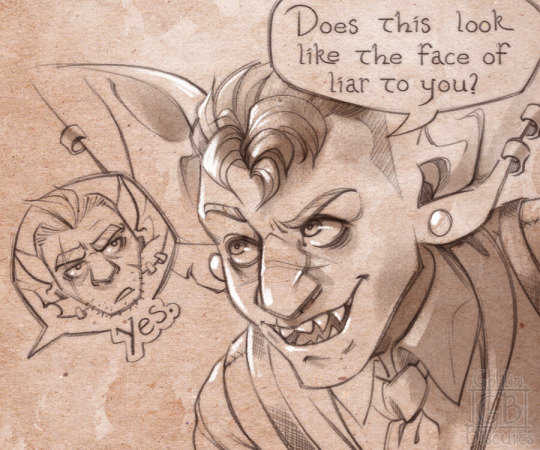
It’s been a while since i’ve gotten to draw any goblins but here they are. The boys.
Zak © myself and Wix © @doodlesomestories
Don’t repost or modify my art. Thanks.
32 notes
·
View notes
Text
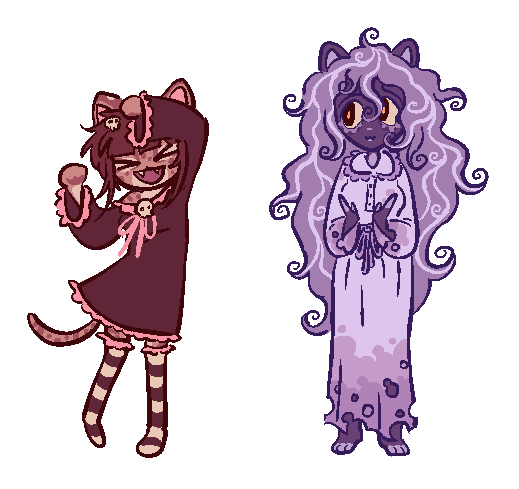
go crazy!!!!!!
#they're dancing to lemon demon#ocelotlesbian#oc#paranormal lesbians#lottie akeley#caroline florence#furry art#furry#catgirls
50 notes
·
View notes
Photo

Carl Akeley with a big bull elephant he mounted in the Museum of Natural History, 1920. Akeley is considered by many to be the father of modern taxidermy. He was also an explorer and naturalist who used art to celebrate wilderness and to argue for its protection.
By the time he arrived at the American Museum of Natural History in 1909, he had developed a sculptural technique for taxidermy that became known as the “Akeley method.” His process required taking precise measurements, making plaster impressions, and using bones from a specimen’s skeleton to create lifelike clay sculptures over which skin would be fitted. Akeley’s work elevated the practice from a crude craft to an art form, and his techniques became the basis for modern taxidermy.
This precise and detailed taxidermy style is on spectacular display in the Museum’s Akeley Hall of African Mammals, a hall of 28 habitat dioramas conceived by Akeley during a Museum expedition. He did not live to see the hall, which became one of the most famous diorama galleries in the world, completed. He died on Mount Mikeno—a site depicted in the mountain gorilla diorama, in what is today the Democratic Republic of Congo—in 1926, a decade before the hall opened.
Photo: James L. Clark via the Museum of Natural History
Text: Museum of Natural History
#New York#NYC#vintage New York#1920s#james l. clark#Carl Akeley#taxidermy#Museum of Natural History#museums#elephant#Akeley method
147 notes
·
View notes
Text
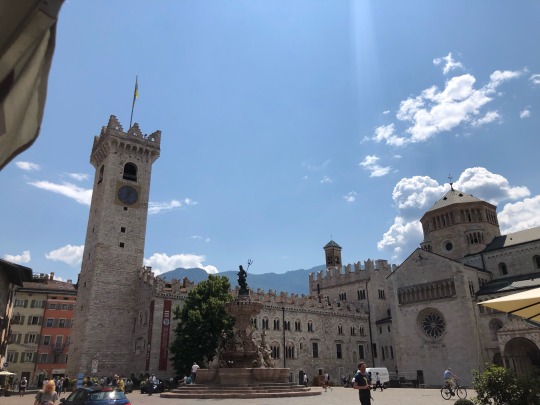
So weit die Füße tragen: Tag 14
Blondinen bevorzugt
Von Cavalese nach Trient
Nicht eine hab ich gesehen.
Und da saßen wir nun schon mal über 2 Stunden im teuersten Café der Stadt und am schönsten Platze: nicht eine Blondine. Leute, das geht ja gar nicht. Und ich hab ganz genau hin geguckt! Da gab es alles: Dicke, Dürre, Kurze, Lange, welche eingemummelt (wie das heute eben so ist) und welche fast nackt- nur kein einziges Blondchen dabei. Ergo: Hier in Trient muss genetisch irgendwie was falsch gelaufen sein. Auf jeden Fall fordere ich von Brüssel eines: Artenschutz für Blondinen.
Beim Nippen am Bierglas bei 28 Grad im Schatten entdeckte ich zugleich eine völlig neue Art von Home Office - made in Italia.
Und das läuft in etwa so: man trifft sich ab zehn am Morgen in einem schattigen Café, belegt gezielt die besten Plätze, packt Handy und Netbook aus - los gehts. Na ja nicht gleich und nicht sofort - wir sind ja in Italien.
Zuerst wird der gestrige Tag ausgewertet, dann geht es um Frauen, Fußballspiele und Autos. Zuletzt wird ein winziger Schuss Politik eingemischt ( ja nicht zu viel), ehe man irgendwann so nach anderthalb Stunden auf das Thema Arbeit und Büro kommt. Natürlich nicht durchgängig - das wäre ja zu viel Stress. Zwischendurch (neben uns saß eine Männerrunde) wurden die vorbei laufenden Damen ausgiebig bewertet und hie und da ein verstecktes Signal vorhandener Paarungsbereitschaft ausgesandt.
Ist an sich ja ganz amüsant - wenn nicht ein gewaltiger Haken dabei wäre: die Lautstärke! Leute - Italiener werden allenfalls nur noch von Holländern in der Gruppe oder besoffenen Engländern übertroffen. Da verstehst du nebenan dein eigenes Wort nicht mehr. Dazu fuchteln sie mit Händen und Armen herum und springen ohne Vorwarnung auf, als ob sie grad eine Kreuzotter (gibts die hier überhaupt) unterm Tisch entdeckt hätten. Das Ganze ist solides Straßentheater und sollte eigentlich kostenpflichtig für Zuhörer sein. Stellt sich doch die Frage, ob diese südländische Art von Home Office in Deutschland einzuführen wäre?
Ich denke eher nein - da fehlt uns die Genstruktur. Leider.
Es muss aber unbedingt ein Deutscher gewesen sein, der - viel zu dick angehost - mit seinem e bike vorbei radelte. Woran ichs erkannt zu haben glaubte - an seinem Helm mit einer Kamera oben drauf. Auch jede Sekunde seines aufregenden Tuns und Treibens zu erfassen und daheim Freunde und Familie damit zu nerven - das kann nur ein Michel sein. Denn eigentlich sind Helmkameras ebenso out wie Selfi-Sticks oder teure Kameras um den Hals.
Paar Worte zur heutigen Tour: Um unseren Zeitplan einigermaßen zu erfüllen, sind wir per Bus ins Etschtal und nach Trient gewechselt . Die schönen hohen Berge des Fassa Tales wurden immer flacher und langweiliger. Aber morgen geht es wieder zur Sache und in die Höhe. Versprochen!
Blume des Tages war die wilde Akelei. Mensch des Tages war jener nette Hotelier, der uns viel früher auf unser Zimmer lies. Die Kosten pro Nase: 85 Euro.

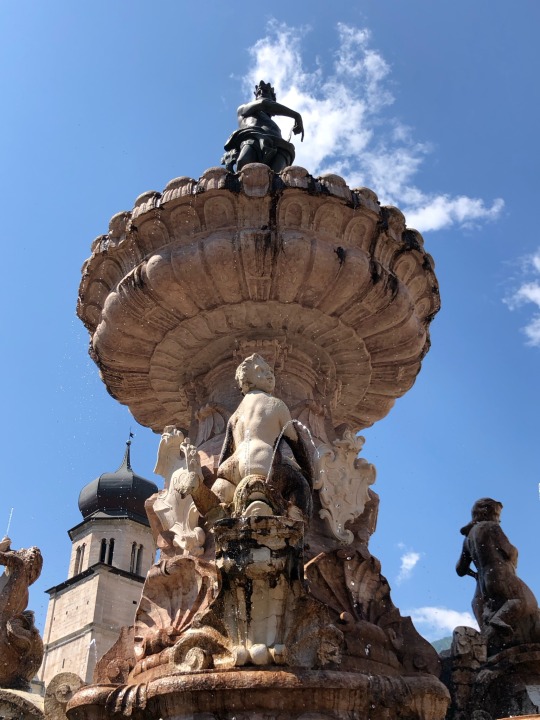
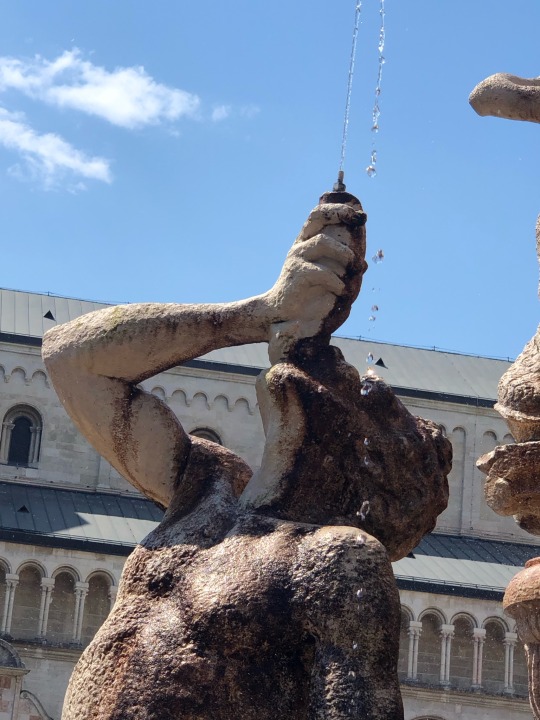
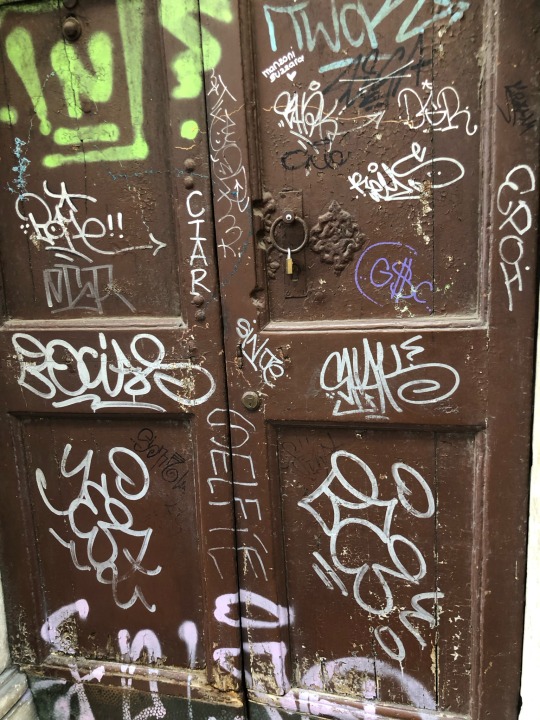
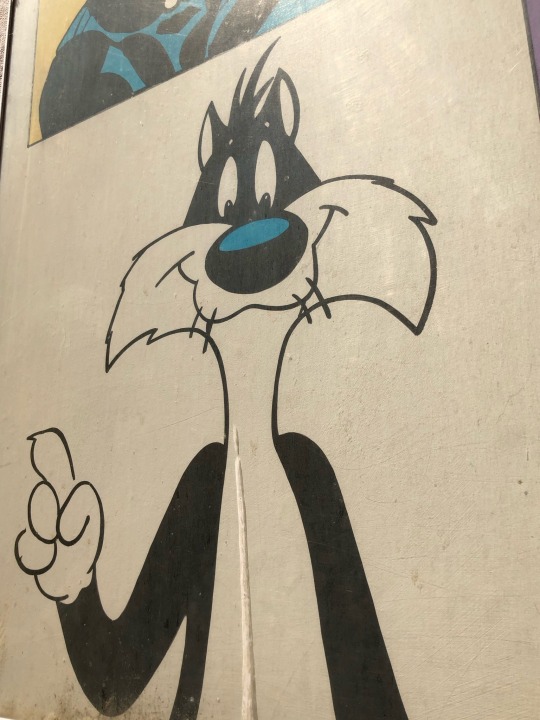
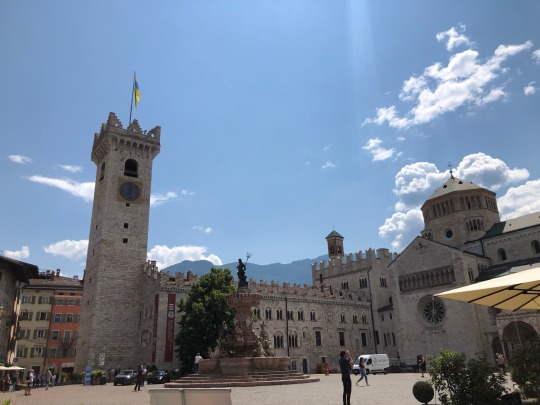

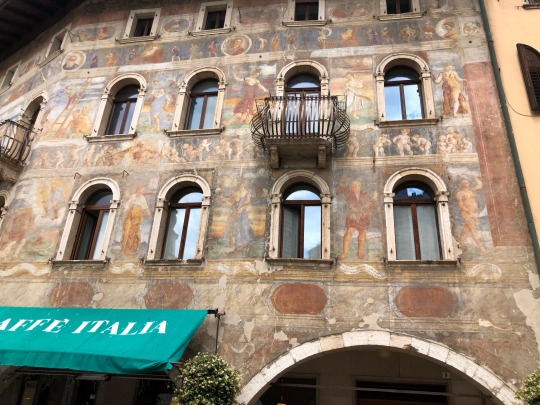
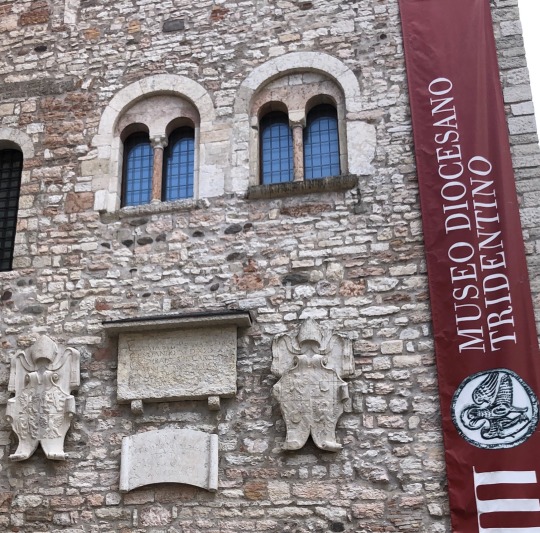
0 notes
Text
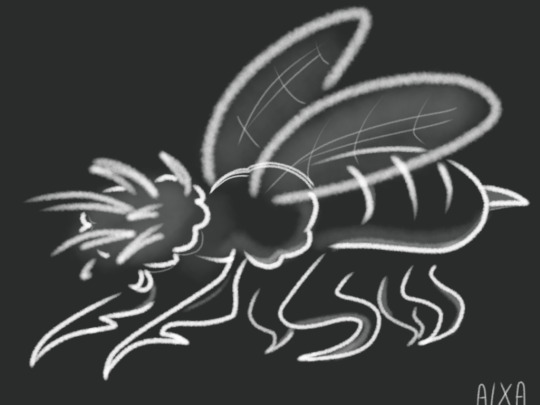
Mi-go
#hp lovecraft#lovecraft#lovecraft stuff#The Whisperer in Darkness#Akeley#my art#art#nothing better to do#lol#fanart
8 notes
·
View notes
Photo
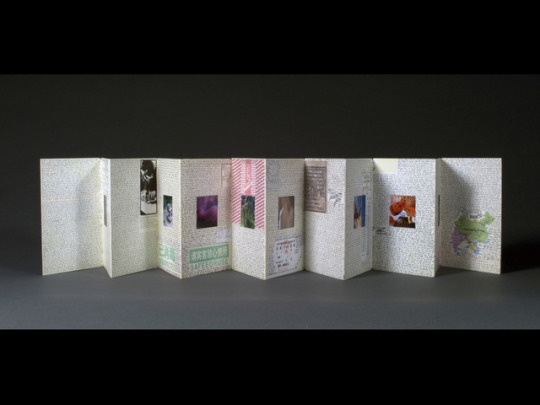


New Works from Witt Visiting Artist Lee Marchalonis.
Recently, we featured this post which showcases Stamps Printmaking Visiting Artist Lee Marchalonis. Lee visited the Stamps School this March. She has shared several new works with us. The first image features her Travel Book, which is an accordion-style book with removable photos. It is one edition of twenty. Next is her Getting Out, Going Nowhere, which has drum leaf binding, relief printing from linoleum blocks, photocopy, and inkjet printing. Lastly, there is a page spread from her Mystery of the Musty Hide, a book with an essay by Alison K. Greene, who also composed an essay for Lee’s work yes, but, featured in this post. In addition, Carl Akeley and Lee Marchalonis have composed texts for Mystery of the Musty Hide. Akeley’s text describes the skinning of an elephant carcass in the field and creates a framework, both visually and conceptually, for Greene’s essay, which revisits the theft of an ivory-billed woodpecker from an exhibition about extinction which was held at a university natural history museum. Mystery of the Musty Hide was printed using handset type, linoleum cuts, a photogravure, color photocopy transfer, and handmade flax paper. Lee designed and produced Mystery of the Musty Hide. She, Carl Akeley, and Alison K. Greene created text for the project.
Lee says about her work: “This book reflects the results of an investigation I undertook after viewing a particularly beautiful mounted zebra specimen at the University of Iowa’s Natural History Museum. Around the same time, I visited Chicago’s Field Museum and was struck by the quantity of taxidermy zebra on display. Surely one grouping of six or seven would say everything the museum needs to communicate to a viewer about the animal? I had the impression of multiple entire herds of zebra placidly standing in featureless plexiglass boxes. I wondered: how did the museum get all these zebras? Do they need them? Why are so many on display? And whose names are listed on the label?
During a joint residency last summer at the Ora Lerman Charitable Trust Foundation, Alison K. Greene wrote the text that is presented here on the right hand side of the spreads. Greene’s text contextualizes and describes the theft of an Ivory-billed Woodpecker mount from an exhibition on extinction. I have presented her text in hand-set 8-point Century Schoolbook, surrounded by another text which has ben carved into linoleum and printed. The surrounding text is excerpted from Carl Akeley’s autobiography, and describes an elephant hunt and subsequent skinning of the animal in the field in order to prepare it for inclusion in the African Hall of Mammals at the American Museum of Natural History in New York. Included in the book are three images: a photogravure of a Grevy’s Zebra from the University of Iowa Museum of Natural History, collected and taxidermied by Akeley, the stoic expression of which led me to further research into Akeley and the early 20th century naturalists, a sheet of paper I made from flax fiber and treated with ink and beeswax to give the impression of elephant skin, and finally a photograph inkjet printed on Japanese lens tissue taken in the archive of the University of Iowa Museum of Natural History of the remaining two Ivory-billed Woodpecker skins mentioned in Greene’s text.
The Mystery of the Musty Hide refers to the Nancy Drew books I read voraciously as a child. I have positioned myself as a “spunky girl detective” (as opposed to a high-level researcher), presenting a narrative concerning Carl Akeley’s life and work, in relation to my personal experiences and understanding of the natural and the museum world. The narrative is made up of six parts, beginning with a copperplate photogravure of the zebra that inspired this investigation. Two main texts are printed side by side, and make up most of the book. Excerpts from Carl Akeley’s ghostwritten autobiography create a framework for A. Kendra Greene’s text. Greene’s text presents a nuanced set of questions about extinction and the nature of possessive love. As both texts progress, Akeley’s text fades from prominence. The artist statement is titled, ‘Case Notes’ and is at the end of the book.”
#Lee Marchalonis#stamps printmaking visiting artist#Stamps School of Art and Design#stamps printmaking#Signal-Return#detroit#detroit artists market#printmaking#printmaking at Michigan#visiting artist#book arts#artist book#accordion style book#drum leaf#relief print#photocopy#inkjet printing#alison k greene#carl akeley#handset#handset type#linocut#photogravure#handmade flax paper
11 notes
·
View notes
Photo
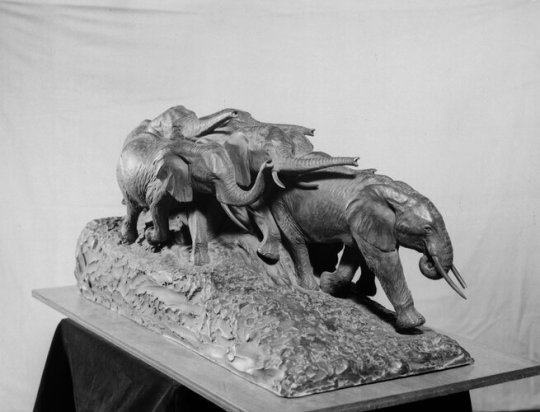
The Charging Herd, Carl E. Akeley, 1915, Brooklyn Museum: American Art
Statuette of herd of seven elephants; pressed tightly together; herd strides down a declining base. Condition: good; white corrosion in some crevices.
Size: 12 5/8 x 28 3/8 x 12 5/8 in., 80.4 lb. (32.1 x 72.1 x 32.1 cm, 36.5kg)
Medium: Bronze
https://www.brooklynmuseum.org/opencollection/objects/87
4 notes
·
View notes
Photo
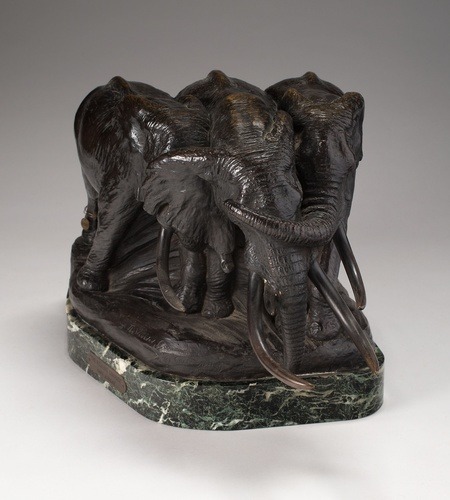
The Wounded Comrade, Carl Ethan Akeley, 1913, Art Institute of Chicago: American Art
George F. Harding Collection
Size: 29.2 × 61 cm (11 1/2 × 24 in.)
Medium: Bronze
https://www.artic.edu/artworks/102225/
3 notes
·
View notes
Text
Brazen: Rebel Women Who Rocked the World by Pénélope Bagieu
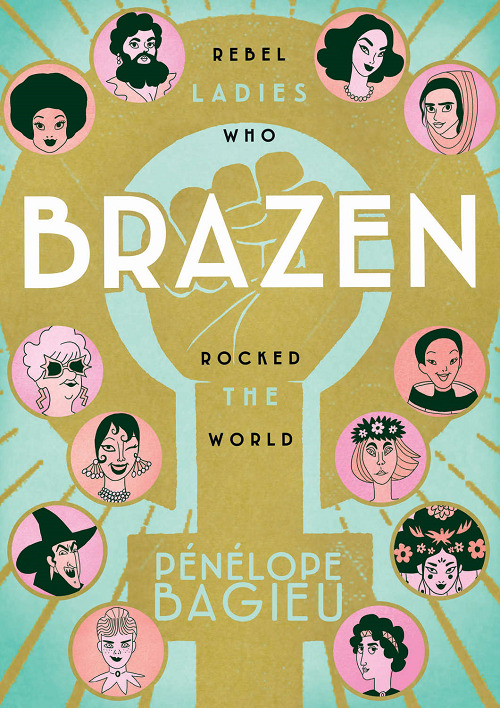
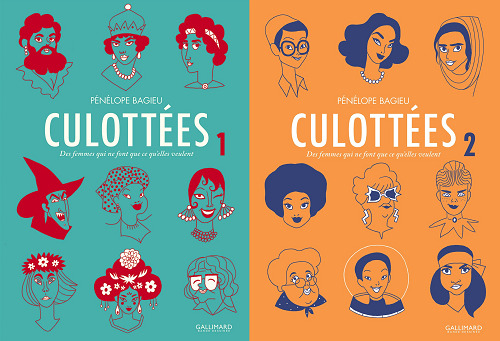

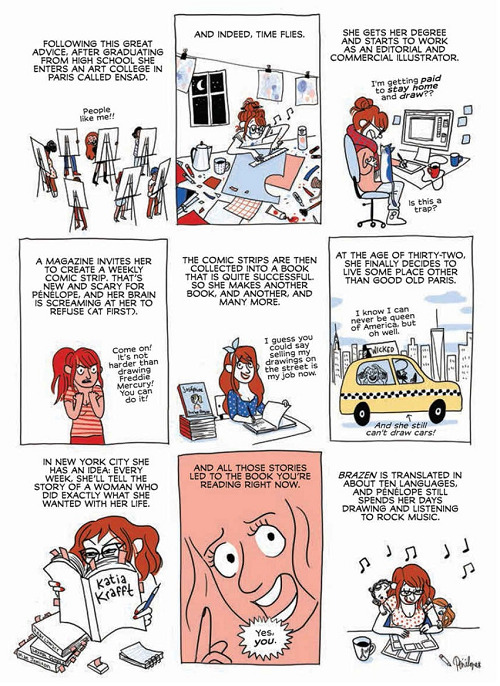
French artist Pénélope Bagieu created the comic series Culottées: Des femmes qui ne font ce qu'elles veulent in 2016 which in short installments presents 30 biographies of women from across the globe, ranging from the 4th century BCE to several ladies who are still living today. A fairly diverse collection in more than a few ways by ethnicity, nationality, class, career, age, sexuality, etcetera it is though rather cotemporary with only three of the women covered born before the 1800s. Popular it has now been licensed in many languages, translated in English by Montana Kane titled Brazen: Rebel Women Who Rocked the World published by First Second. If you’re curious the full list of the women:
Clémentine Delait
Queen Nzingha
Margaret Brainard Hamilton
The Mirabal Sisters
Lady Josephina Caroline Petronella Huberina van Aefferden
Lozen
Annette Kellermann
Delia J. Akeley
Joséphine Baker
Tove Jansson
Agnodice
Leymah Gbowee
Giorgina Reid
Christine Jorgensen
Empress Wu
Mary Temple Grandin
Sonita Alizadeh
Cheryl Bridges
Thérèse Clerc
Betty Davis
Nellie Bly
The Shaggs
Katia Krafft
Jesselyn Radack
Hedy Lamarr
Naziq al-Abid
Frances Glessner Lee
Mae Jemison
Peggy Guggenheim
And the English version ends with a bio of Bagieu herself. Though, the original French edition (two separate volumes btw) has a different installment. Turns out every edition is a little different because there can be some challenges in bringing comics across the globe.
The profile English readers won’t see is Phoolan Devi.
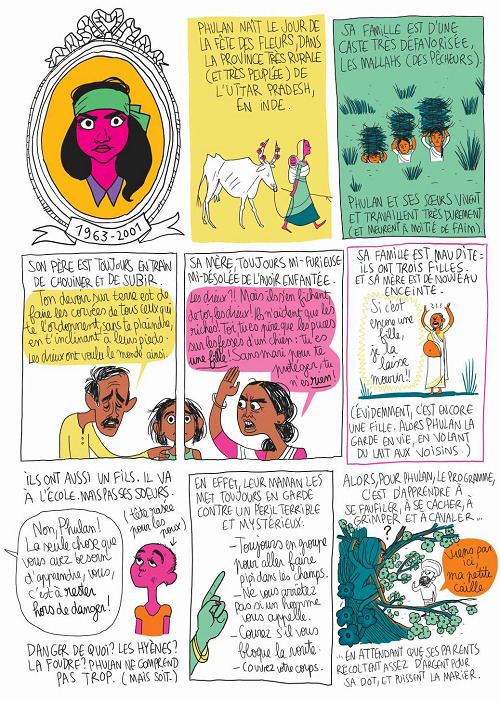
An Indian woman born in 1963 who would become an outlaw renowned as a “Bandit Queen” and later who took up politics and eventually was assassinated a few weeks short of her 38th birthday. Because hers is a history steeped in violence, particularly sexual violence. Too much for the New York publisher. And Bagieu feeling the entry on Phoolan Devi couldn’t really be changed in presentation and still remain understood therefore it’s omitted completely. So, here is where I’ll plug Phoolan’s autobiography The Bandit Queen of India: An Indian Woman's Amazing Journey from Peasant to International Legend, compiled by two writers with her as she was illiterate.
There are also a few other bios that managed with some alteration to still be included.
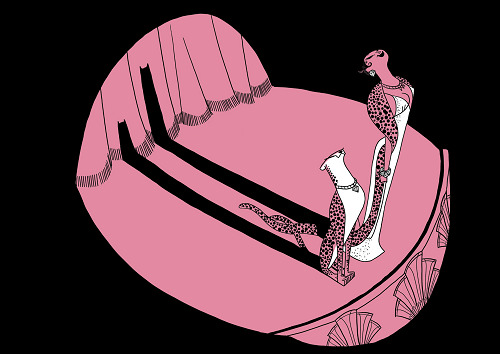
There’s something ironic in that entertainer Joséphine Baker, who found a place in her adopted country of France, is in cartoon form once more restricted when this book traveled over the ocean back to America. I’m not sure how the art redrawn in a few panels to cover or omit her topless is fitting the aim of the publisher. (But many of the splash pages like above sure are pretty.)
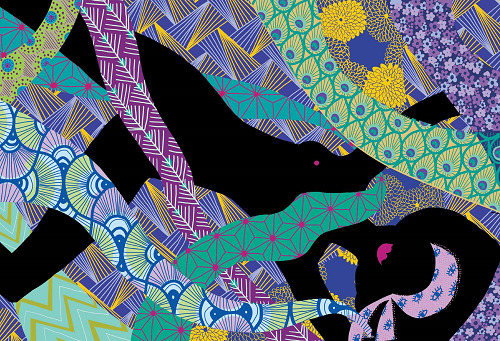
Same for singer/songwriter Betty Davis, can’t have a nipple in a funky splash page with her bio huh. (Above image French edition.)

Or panels depicting actress and inventor (what the splash page above stresses) Hedy Lamarr nude that were redrawn. Howard Dietz in his autobiography Dancing in the Dark wrote she once stated to him “You Americans are terrible, you have no artistic appreciation.” in relation to how the US press treated her regarding one of her earliest and most (in)famous roles. To also note here, the book Ecstasy and Me that was mentioned in the comic is not a great title to get if Lamarr’s life interests. It was a ghostwritten (auto)biography that Lamarr was more than critical of and sued over its publication, the likes of Variety doing an article about the controversy in 1966.
Which also brings up a point that no edition of Bagieu’s comic I’ve seen has reference page(s) at the end for where Bagieu drew information from and some details for the bios may not be on the money. At least I noticed a couple things. Drawing broad strokes is an unsuitable defense. It’s understandable when the webcomic was created at a rapid pace, but any collected edition offers a chance to revisit or receive more feedback with a greater number of eyes involved.
And to the differences between English and French editions, these are in part that First Second apparently marketed Bagieu’s comic younger. Citing common core connections appeal to schools too, which are the second place after public libraries where challenges to books occur in the US. In fact, since I first wrote this review Brazen: Rebel Ladies Who Rocked the World has still been targeted as not appropriate for K-12 schools and challenged. Though, I’ve yet to see a recommendation for an age under that of teens, unless it’s from kids whom the comic has made its way into their hands (as many things can). But also, when it comes to promotion is it fair to ask if these kind of changes for the English edition go against the words in its title?
brazen: Bold and without shame.
rebel: A person who resists authority, control, or convention.
rocked: Cause great shock or distress to (someone or something), especially so as to weaken or destabilize, be exciting or full of social activity, very good or pleasing.
Even the cover redesign making use of an emblem of the raised fist in a Venus symbol could cause discussion. Most will trace this symbol back to the 1960s but, it’s a little unclear exactly and nowadays used across the world with association and meaning a bit different to people, not always positive or, some protective of it for cultural or anti-commodification reasons.
Honestly somebodies somewhere are going to say the book is all wrong due by its very nature that the women featured in this comic have personal/professional/public aspects of their lives that made them stand apart. Many of their histories contain all sorts of adversities life offers too. Take your pick of what’s unsuitable. Abortion? Child brides? Childhood sexual abuse? Divorce? Domestic violence? Gender identity? Health education? Murder? Racism? Rape? Sexuality? Torture? War? Quite a world out there ain’t it.
The distinction Bagieu has spoken of when it comes to content challenges and sensitives regarding the ideological or cultural seems very difficult to me. Whether and how detailed the nude form can be depicted (around motherhood apparently passed), certain types of work eschewed, or the spaces and manner (dis)allowed when it comes to the subject of abuse and sexual violence or its effects, especially when founded in lived experience are to me sociopolitical. Yes, this is tough stuff to sort but, in any event, I at least find it disgraceful a censored edition would receive the Eisner for Best U.S. Edition of International Material in 2019. Can do better than that, no?
Something best accompanied by more books (as it is the hope of its creator that readers would search and explore more), overall Pénélope Bagieu has created an interesting comic, an educational comic, an entertaining comic. Dare I say contributing its own good to sit on bookshelves across the globe as it is increasingly doing. I just wish it could do that without having to go change itself in these ways to fit there.
The original French edition Culottées: Des femmes qui ne font ce qu'elles veulent by Pénélope Bagieu is available in print and digital, in two volumes ISBN#: 9782070601387, 9782075079846
Brazen: Rebel Women Who Rocked the World by Pénélope Bagieu is available in English translated by Montana Kane, print and digital, published by First Second
#biography comics#women's comics#pénélope bagieu#culottées#Brazen: Rebel Women Who Rocked the World#eisner winner#ideological vs cultural#popsugar reading challenge#reading women challenge#cbldf24#international women's day#censorship#banned and challenged books#french literature
11 notes
·
View notes
Photo
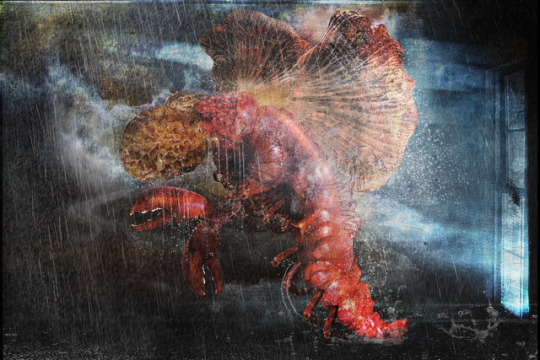
«And here’s the worst. I tried to photograph it for you, but when I developed the film there wasn’t anything visible except the woodshed. What can the thing have been made of? I saw it and felt it, and they all leave footprints. It was surely made of matter—but what kind of matter? The shape can’t be described. It was a great crab with a lot of pyramided fleshy rings or knots of thick, ropy stuff covered with feelers where a man’s head would be. That green sticky stuff is its blood or juice. And there are more of them due on earth any minute.»
The whisperer in the darkness - H.P. Lovecraft
#mi go#cthulhu#lovecraft#hp lovecraft#the whisperer in darkness#akeley#horror#fan art#cthulhu mythos
3 notes
·
View notes
Text
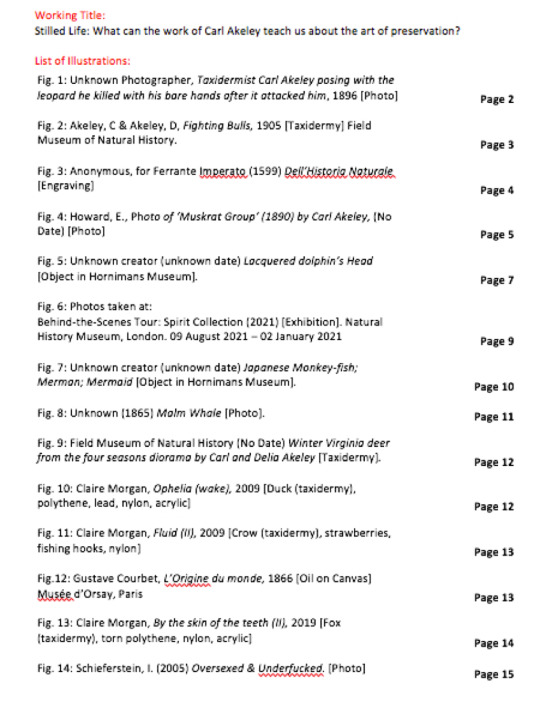
Abstract/ Blurb
Using the life and work of radical taxidermist Carl Akeley (1864-1926) as a point of entry, this project aims to query the artistic merit of animal preservation and its future in the modern artistic lexicon. As opposed to stagnating as a remnant of history, the act of taxidermy is still executed by a growing number of hobbyists and interested parties alike, however the housing and public display of preserved animals has waned, leaving fixed instalments such as those in the Natural History Museum gathering dust, slowly degrading.
Spare the few focussed exhibitions used to educate tourists, taxidermy is seldom seen in an artistic sense. Akeley’s work, which is in great part responsible for progressing animal preservation away from being an anthropocentric ‘furniture’ craft and towards a narrative and didactic production, allows us to scrutinise taxidermy practices as not exclusively based in pride, rather, as a viable artistic form and material – a claim supported by the works of Claire Morgan and Iris Schieferstein.
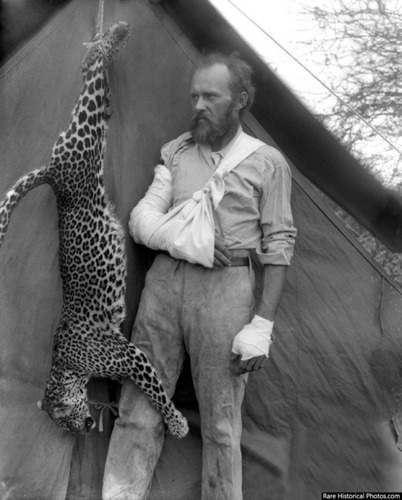
(Fig. 1: Unknown Photographer, Taxidermist Carl Akeley posing with the leopard he killed with his bare hands after it attacked him, 1896 [Photo])
Akeley Synopsis
‘Mounted animals were already obsolete as a viable form of zoology when the Natural History Museum (London) opened — researchers behind the scenes were increasingly focusing on the living animal, as stilled, frozen bodies continued to educate the public. It was precisely because taxidermy had become the bankrupt estate of scientific research that these objects entered the field of artistic reflection.’ (Lange-Berndt, P., 2014)
Taxidermist Carl Akeley (Fig. 1) was born in rural Clarendon, New York state, in 1864. Growing up in the Gilded Age and surrounded by a culture of outdoor sports like hunting, Akeley would become known for applying his artistic abilities and obsession for realism to revolutionise the practice of taxidermy. In contrast to the longstanding status quo ‘upholstery’ of an animal (usually a skin stuffed with inexpensive materials), Akeley earned his title as the ‘Godfather of modern taxidermy’ by being the pioneer behind meticulously sculpting the structure of an animal in modelling materials, then mounting the skin onto the cast, giving the animal an uncanny resemblance to its extant form.
This project will look at his work as a form of art, and less at the person he was or became; however, it is important to consider the suffering he was responsible for; that although he established a painstakingly accurate way to depict natural evidence as art, he was also a product of his times – a museum salaried hunter responsible for the availability of ‘voucher specimens’ (a specimen that serves as a verifiable and permanent record of wildlife by preserving as much of its physical remains as possible). Already vulnerable - and therefore valuable - animals were collected on excursions funded by institutions, although one could argue that Akeley and his colleague/ wife Delia (along with their cohort of assistants, artists, photographers and writers) were the best to employ, for their eccentricity and craftsmanship allowed them to best depict any animal subject to this practice, making something appear so convincingly real that no-one would think one was involved at all – essentially making taxidermy an artistic form, despite it still not being accepted as such.
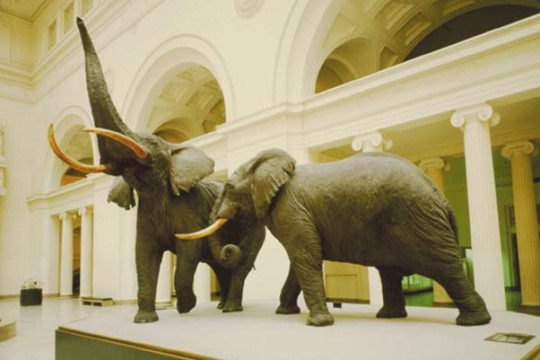
Fig. 2: Akeley, C & Akeley, D, Fighting Bulls,1905 [Taxidermy] Field Museum of Natural History.
Akeley not only worked during the time when photography and film was being used (albeit in a novel capacity) he also helped to pioneer this craft whilst still working for museums.In the modern world, the majority have easy access to photographic appliances, and with dedicated channels to view documentaries on it is easy to dismiss taxidermy as an antiquated craft, although one should consider that without the concept behind preservation, there would have been no motivation to create the motion picture camera used to film the first documentary ‘Nanook of the North’ in 1922.The idea of capturing the wild was held in higher regard than the blood - sport of hunting to Akeley, and in later life, according to Alvey (2007), he retrospectively indicated that:
"the camera hunters appeal to me as being so much more useful than the gun hunters." The latter had amassed a great deal of knowledge about the wildlife of Africa, but left no record of it, while the "camera hunters" have left a photographic record - "and when their game is over the animals are still alive to play another day."
Alvey, primarily looking at the photographic and filmic legacy of Akeley, continues and comes to highlight a key component of his character noticeable in many, if not all ‘great artists’: the obsessive drive to ‘capture’ the natural in a mimetic form; applying “André Bazin's proposition that at the root of the representational arts is an "obsession with realism" or in his famous shorthand, a "mummy complex.". This is a central factor whichmakes Akeley suitable for the discussion of taxidermy as an ‘art’. As the figurehead of modern preservation, he transformed what was primarily a practice following the rules of fast fashion into a creative craft, and instead of anthropocentric pride, the depiction of reality was key. In pairing his technical mind with a desire to capture an ‘as in life’ version of what he witnessed in the biological world, he became the de facto natural curator, his fame perpetuated by his mania.
retrospective on taxidermy
Historically, taxidermy has always had a quintessential essence of egocentricity. One could say that the act of animal preservation has fallen somewhat into the same category as murder, where an individual has the power of a god; whether taking a life, or curating death’s trophies. At the same time, taxidermy has also always been something to visually fascinate, the key to any form of art, which is why taxidermy was popular for wealthy collectors as something that they could contextualise out of self-interest rather than facts (a practice commonly seen in western religious art).
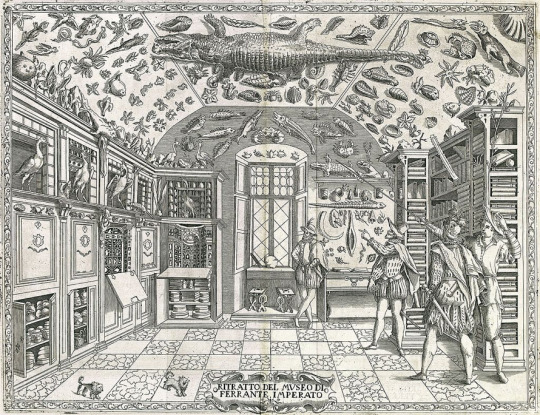
Fig.3: Anonymous, for Ferrante Imperato (1599) Dell’Historia Naturale[Engraving]
The Wunderkammer (or ‘cabinets of curiosities’) of the 1400s onwards formed the basis of what we now know as the ‘museum’. Facilitated by colonialism, the upper classes could entertain guests with tales of obscure objects and fantastic beasts, oftentimes bolstered by false self-insertions, within dedicated spaces and even whole rooms, as depicted in fig. 3. (Aloi, 2021). Even today one can see hunting trophy rooms in films and programmes as an extension of this practice, but Aloi suggests that generally speaking:
“…during the 18th century the focus shifted. The rise of science as a defined discipline meant that collections could no longer just represent the wealth and intelligence of the owner, but that they needed to make sense of the world we lived in a more objective way. This is what the human skull we see on the top shelf of [Domenico] Remps’s cabinet anticipates—an existentialist urge to understand life and the knowledge that despite the wealth one might accrue, death will at once take it all away.” (Aloi, 2021)
Thus, personal endeavours and collections of favoured objects; hunted, stolen and bought were purchased by institutions, then curated for the public. The nature of these cabinet collections meant that the line between the artistic and scientific would overlap greatly, false preservations and genuine artefacts housed together would be compartmentalised. Just as art galleries specialise their interests to say, portraits or modern art; nature, science and art were sorted via institution. Due to the components of taxidermy being largely animal matter, they would have been classed as scientific, or indeed just kept for ‘scientific study’; as preservations of nature, they were kept with seashells and archaeological bone fragments in the drawer marked ‘world science’.
Preserved animals have always been popular attractions and opportunities to make a spectacle of humanities’ ‘others’ – but this schism between human and non has been exacerbated by time and modern life, our individualism removing us from a system we are biologically grafted to. To amputate taxidermy from the context of visual culture completely is like taking the skull out of Remp’s cabinet, it eliminates the potential energy by imposing exclusivity. Although one could say that museums allow free access to a resource, they also falsely preserve the concepts of the pieces they house. Akeley himself evidently thought it best that the specimens he would deliver for institutions like the Field Museum of Natural History in Chicago would provide the public with ‘as in life’ depictions of animals and their habitats, potentially recognising the importance of context within his craft (or arguably the product of his mania for detailing the tangible animal), which lead to many institutions following suit, producing inspiring displays from the addition of context counteracting the anthropocentric collector atmosphere of museum menageries.
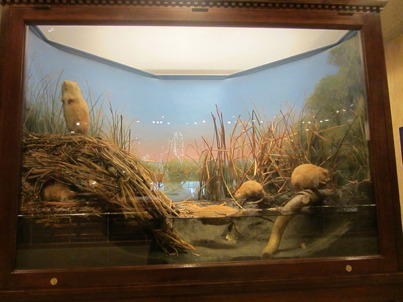
Fig. 4: Howard, E., Photo of ‘Muskrat Group’ (1890) by Carl Akeley, (No Date) [Photo]
Akeley’s craft, for example,Fig.4, raises the argument of whether a faithful depiction is less ‘artistic’ in preservation, but it could be contended that, in fact, to meticulously consider every detail of all the subjects within a recreation is as much an artistic endeavour as a scientific one. Take for example, how the anatomical depictions of the human body existed as art after the ancient Greek Galen’s works (who had only dissected other animals), until Andreas Vesalius’ illustrated book disproved theories held for over a century. Art and science exist with a similar symbiosis as humans and nature, to undercut one side would be damaging the other, when in combination truly amazing things can be created: in Akeley’s dioramas, there is biotic artistry as well as artistic science
science vs art
Primary research: Museum Trips
Within this section of the project, I report the experience of visiting the Hornimans museum and the Natural History Museum (both general admission and theBehind-the-Scenes Tour: Spirit Collection).
The situation that I found myself in when visiting the Hornimans museum for the second time (location drawing) highlighted to me the importance of taxidermy in the artistic world, mainly for its benefits in improving artistic execution and the first-hand opportunity it provides as a grotesque reference image. It also emphasised that like the Grants Museum of Zoology, there is a presentation style to the taxidermy and objects within more aligned to artistic institutions than historical ones– which opens a discussion on whether this is an organization of artistic curation or colonial practices. For example, Fig. 5, a Japanese painted Dolphin skull, whether kept for its aesthetic appeal or an empire obsession with ownership (or both) is not publically known, but it certainly doesn’t serve a scientific purpose, more an anthropological one. It highlights creative decisions made by people not nature, and like many of the Hornimans’ pieces, curiosities and taxidermy occupy a similar space as they would have in the Wunderkammers of the 1400’s.
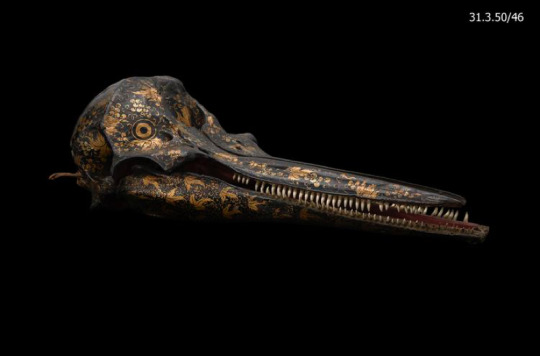
Fig. 5: Unknown creator (unknown date) Lacquered dolphin’s Head [Object in Hornimans Museum].
A large majority of the animal exhibits in the main room are presented as educational, separated out by taxonomic classifications or animal characteristics, but it has to be acknowledged that this museum was once just a huge wunderkammer, although they should be commended for the repurposing of empire mentality as education. Another aspect that became apparent through viewing the collection was that taxidermy is an art form which requires the craftsman to do so much, that there should be no sign that they were there at all; The artistic merit in taxidermy could be argued as being in the essence of nature, rather than in creating something wholly new.
But this does raise issues, such as art acting as a justification for suffering, which applies hugely to the practice of huntingfor mounts. One could propose it as a great way to learn the forms of an animal by using a someone’s craftsmanship, in conveying the essence of a living creature, but in doing so how detached are we from the suffering of the animal? A counter argument could be that this would be more of an issue if taxidermy remained a primary resource, as opposed to the modern viewer mostly being exposed to older specimens, not likely killed in their lifetime (although this argument leads to the conversation that distance from an event doesn’t change the nature of the incident). However, in ethical taxidermy, the animal died regardless of human interaction, or was unintentionally killed, but it’s pelt will be immortalised for educational or aesthetic referential means.
As a species, we try to distance ourselves from the fact that we are animals by saying things that seemingly qualify us as higher, or more than an animal. In ‘traditional’ taxidermy, one ends up quite surreally using an animal’s death to prove we are more sophisticated beings, through the method of killing - an animalistic act, but instead of survival, the goal was bragging rights. Western taxidermy was conventionally the merchandise of blood sport. With this in mind, it is apparent that the product (taxidermy) outlives the name of the hunter; we look at taxidermy to see the animal, in the same way that there are truly wonderful works of art independent of our knowledge of an artist. Science requires empiricism, facts and figures, names and dates, whereas art only needs to evoke something within a person to be considered art, taxidermy then, is stuck between states of existence.
The education provided by the taxidermy in the NHM is minimal really, especially compared to the Hornimans or the Grants Museum – which is a problem. This leads to these creatures being separate from the ‘human world’ as they aren’t contextualised with what visitors know. The greatest book ever written is just words put in order, but the qualifying worth is in the craftsmanship, how those words are attached to one another. This isn’t to say that we scrap anything that isn’t a dioramic depiction of reality, but rather that we make more of an effort to educate, or elicit a response rather than simply witness. The mass extermination of American bison was something that was instigated by white colonialists, but it was only when taxidermy bison were taken to Washington did (white) people actually start to rationalise, and to care.
One component of the problem is that a lot of the creatures in the NHM are immortalised as singularities rather than as narratives, as a blip on the radar with no traction. We are remarkably selfish mammals (the fault of which is both genetic and contextual), wanting things to matter to us whilst suffering from a relatively small ability to rationalise amounts (for example thinking of 20,000 people or 600 rhinos, anything greater than ‘a few’). To see an animal is one thing, but to be able to see the life additional to the skin strenuously placed on a mount, is something with a lasting effect. This would lend itself not only to the theory that taxidermy should be viewed with the same eyes cast towards art conveying a narrative, but also to the argument that recognising and exploiting taxidermy as an art form forces humans to actually care about the natural world, and why avoiding the gruesome root of our evolution is easy when institutions make it easy (acknowledging that humans are perfectly capable of this without help) – without challenges, we are not the apex predator of the natural world, rather, we are lower than any animal on earth.
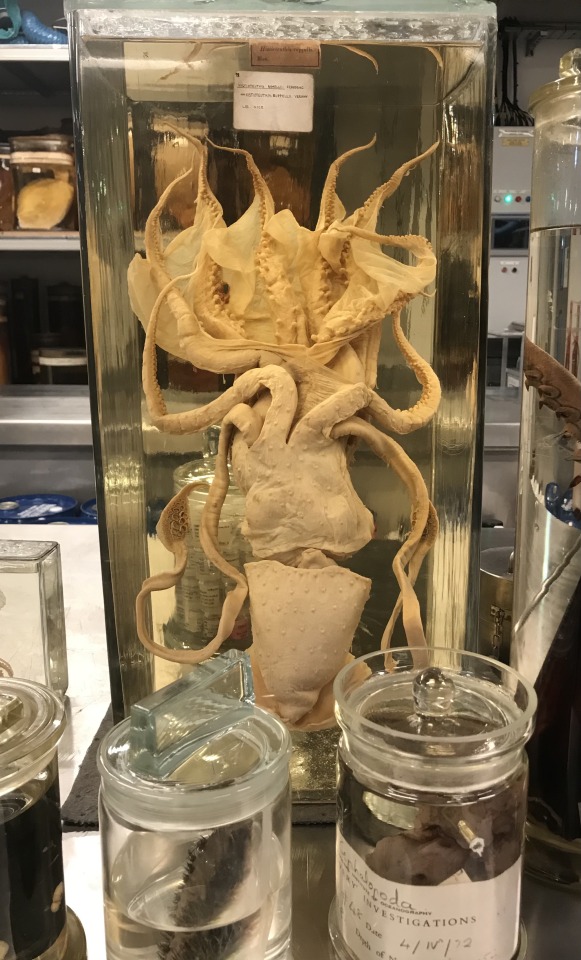
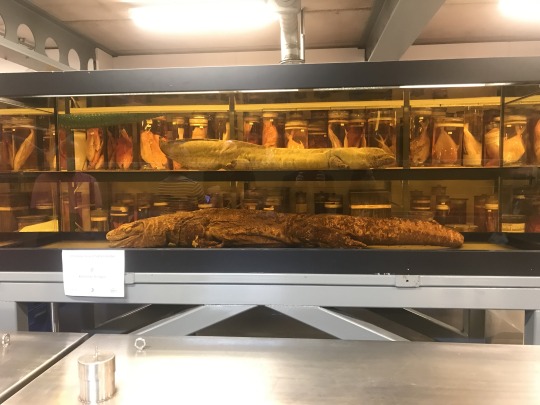
Fig. 6 (A)(B):Photos taken at:
Behind-the-Scenes Tour: Spirit Collection (2021) [Exhibition]. Natural History Museum, London. 09 August 2021 – 02 January 2021
The ‘Behind the Scenes’ exhibit in the Natural History Museum (Fig. 6 (A and B)) allows paying members of the public to go into the scientific belly of the whale, where researchers attempt to decipher the codes of life with DNA swimming around in now reddening and yellowing specimen jars. The guide takes you through vacuum sealed air and temperature-controlled rooms, explaining the pay per view specimens. Only when you get to the main specimen room does it hit you (not just the smell of decay and preservative fluids): the attempt to document everything this side of the last ice age; mammals, birds, reptiles, fish, amphibians and invertebrates of all sizes and origins. Lying in the centre of the room is a giant squid called Archie - shadowing Darwin’s specimens in a locked 2” by 6” cabinet.
Collected on his trip to the Galapagos, these are marked with yellow dots on the top of the jars, signifying that they are the frame of reference for a then unknown species, the OG, the original genus. On the wall, there is a list of pager extensions to each of the head scientists, for each area of the animal kingdom – this part of the institution keeps for these specimens so more can be learned from the animals which make up the earth, and where despite our efforts, humans lie. This experience (although obviously marred by the fact that the man guiding the tour is paid by the museum) did allow viewers to rationalise wet specimens as scientifically important, as well as being another visual display of human dominance. This isn’t to say they aren’t artistically important, but that their scientific contributions will always outweigh their creative ones.
The presentation of specimens in both the Hornimans and the NHM rely heavily on the work of Carl Akeley, in contrast to ‘guestimation’ practices, rogue taxidermy and glutton syndrome preservation. However, this is obviously not true for certain examples which predate Akeley, such as the false merman housed beneath the dolphin skull, Fig 7.

Fig. 7: Unknown creator (unknown date) Japanese Monkey-fish; Merman; Mermaid [Object in Hornimans Museum].

Fig. 8:Unknown (1865) Malm Whale[Photo].
The preservation of false information
- Short section on the human tendency to invest great interest in the preservation of false information, such as of cryptids, or the curiosity element that plays a role in what gets preserved and displayed. That which is ‘one of a kind’, like the Malm whale (Fig. 8), crystal palace dinosaurs, rogue taxidermy or Japanese monkey fish still retain the appeal that drew people to ‘freak shows’ in the late 1800’s, but what role do they serve in the modern world? And can they be seen as artistic objects (e.g. dolphins head) or is it just another excuse to keep misinformation around (and how damaging is this)? This section provides a good contrast to one of Akeley’s most famously accurate works, ‘four seasons’, and why bad taxidermy is fundamental to the discussion of taxidermy as a progressive art.
Akeley’s four seasons vs the modern artist: the progression of taxidermy art:
- Akeley’s four seasons, a set of dioramas depicting Virginia deer in winter, spring summer and autumn, seen now as a benchmark for taxidermy due to not only Akeley’s skill in composition and execution, but also due to the fact that he and his wife at the time Delia, organised the hand rendering of suitable landscape paintings for the backgrounds and individually creating thousands of leaves, fauna and flora to create the dioramas. Arguably a result of Akeley’s obsession for the real and complete depiction. This diorama set is a good piece to compare to modern artist Claire Morgan (and look at how the modernised world allows us to go further than Akeley, referencing his own methodology), then lead through to Iris Schieferstein and to possible passing mention of Joel peter Witkin and Diane Arbus (for a focus on the argument of otherness) onto Gustave Courbet.
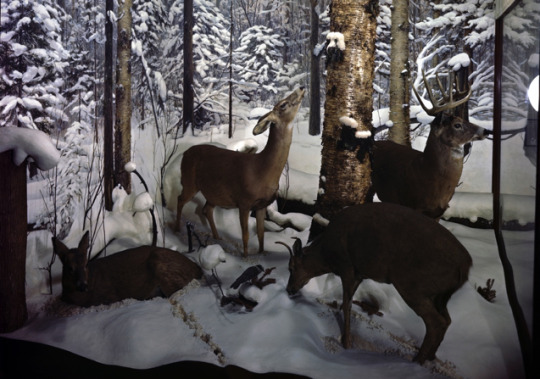
Fig. 9: Field Museum of Natural History (No Date) Winter Virginia deer from the four seasons diorama by Carl and Delia Akeley.

Fig. 10: Claire Morgan, Ophelia (wake), 2009 [Duck (taxidermy), polythene, lead, nylon, acrylic]

Fig. 11: Claire Morgan, Fluid (II), 2009 [Crow (taxidermy), strawberries, fishing hooks, nylon]
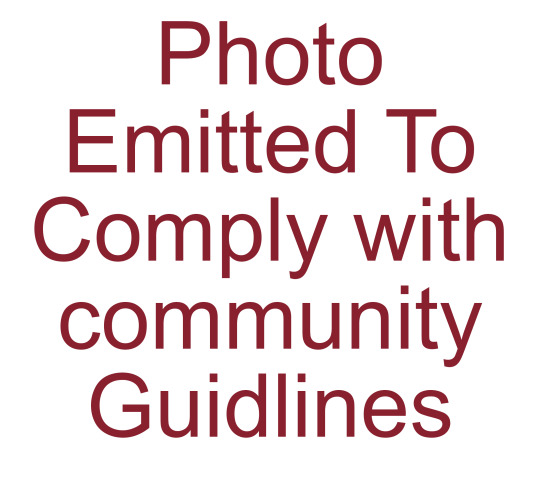
The Other
Fig. 12: Gustave Courbet, L’Origine du monde, 1866 [Oil on Canvas] Musée d’Orsay, Paris
French realist painter Gustave Courbet’s work is known for being socially charged and habitually rooted in tangible human struggles; depictions of inequality, mental illness and the working class through pieces like ‘A Burial at Ornans’ (1850) or ‘The Desperate Man’ (1845) were exhibitions of literal realism, rather than the purely conceptual kind. His work often sparked controversy due to the context that it found itself in (during a tumultuous time in French history), but Courbet’s ‘L’Origine du monde’ (Fig. 12) or ‘The Origin of the World’,is notoriously his most censored, regardless of the relatively small amount of time it has been available to view by the public. Despite being a masterpiece, its existence it has been subject to the patriarchal opinion of what aligns to the socio-cultural beliefs around what can or can’t be openly displayed.
The synopsis of the BBC Radio 4 programme titled ‘L’origine de L’Origine du Monde’ (2016) states:
‘L'Origine du Monde is perhaps the most notorious and explicit painting housed in a public museum…Its first owner was Khalil Bey, a wealthy art collector and diplomat for the Ottoman Empire. Visitors and dinner party guests would be led to his dressing room and towards a green curtain:
"When one draws aside the veil, one remains stupefied to perceive a woman, life-size, seen from the front, moved and convulsed, remarkably executed ... providing the last word in realism".’
The first part of this oil painting’s existence consisted of it being a peep show party gimmick, and since being installed in modernity it has either been proclaimed mainly as something to ogle at, an opportunity for men to spectacle at the ‘other’ or discuss self-perpetuated controversies. Although Courbet is now heralded as a prime mover of the realist effort, the fact that ‘L’Origine du monde’ spent the majority of its existence hidden or in a state of quantum superposition means that it didn’t have the effect it could have had on the art world. The impact it has is reliant on the social context it exists within, and one could posit that currently, as in 1866, most people have a culturally ingrained distaste for seeing the female genitalia in a non-sexualised way, in a manner similar to how we judge the exhibition of animals revealing the common denominators between humans and nature, the most apparent being that of suffering and of death.
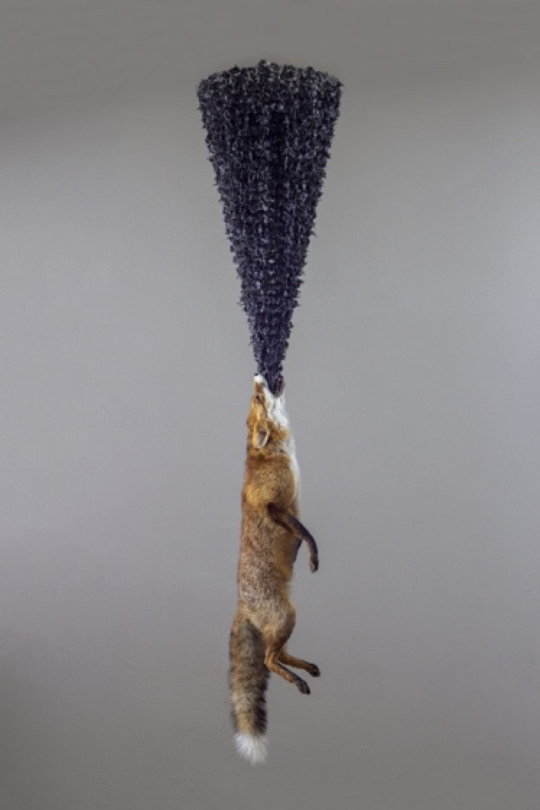
Fig. 13: Claire Morgan, By the skin of the teeth (II), 2019 [Fox (taxidermy), torn polythene, nylon, acrylic]
To support this theory, one may look at how we show a general acceptance as a wider society of the textbook, clinical vagina or the sexualised, pornographic vagina, in the same way that we accept museum taxidermy - or the caged animal, electing for the exposure to it; but somehow people are hypocritically disgusted by actual reality. One could argue that the patriarchy and those most influenced by it see women and animals as the others in theirworld, and claim ownership over them, to spectacle and exploit the preferred parts; pornography and zoo’s, voyeurism and hunting. Perhaps in our social treatment of women in society as ‘less than men’ or by inference, closer to animals, society has assigned honest depictions of female genitals (acknowledged by Courbet as the root of humanity’s existence) to the same class as taxidermy, the stilled version of the ‘other’, ancestrally or current.
Although the context in which these pieces were housed would greatly influence their impact and reach, taxidermy, like or as art, can be a way to celebrate an animal, or to highlight an issue, such as in Morgan’s ‘By the skin of the teeth (II’), Fig. 13; similarly, the human form as in Courbet’s work, or a combination of taxidermy and individuals as in Schieferstein’s ‘Oversexed & Underfucked’, Fig. 14, can be used to confront humanity’s ugly nature with nature itself.

Fig. 14: Schieferstein, I. (2005) Oversexed & Underfucked. [Photo]
In relation to the discussion of preservation and the immortal dead, rather than what is principally described as an obvious painting of a woman, the pallid tones of a corpse creeping into the canvas in ‘L’Origine du monde’, the hue of oxidising meats on a supermarket shelf, remind one of a Vanitas painting, or Memento Mori, designed to remind the viewer of mortality. Courbet, it could be posited, is explicitly telling the world “our biological foundation relies on this complex biological structure and without it we are nothing”. Despite this important idea that should be integral to the human psyche, the exposure of ‘L’Origine du monde’ is controlled by persuadable people aiming to keep everyone contented whilst remaining ignorant to the fact that it should be used as a tool of questioning ‘why does something natural make you uncomfortable?’
The utilisation of something we avoid or feel awkward around, i.e. acknowledging our animal roots, a fear of death or the relationship we have to one another in an age of individual struggle, cultivated by neo-liberal normalisation and confusionism is required in a world numbed by superficial pleasantries. Just as some female artists are utilising their bodies to force society to confront objectification and similar issues,ethically sourced taxidermy can be a way to enlighten and enforce an audience’s relationship with the animal kingdom.Instead of passively viewing a distorted male version of the female body, museum specimens or seeing a perfectly functioning zoo or documentary animal, flesh of all kinds can help conceptually rationalise or contextualise a subject in an applicable way.
However impactful the piece is now, it’s initial force was stolen from it, just as how natural art is stored in the backrooms of museums and great talent is boiled down in the oversaturated soup of social media. Female creators of art especially can relate to this essence of potential energy(taxidermy itself seeing a growing number of female practitioners respective of its male centric roots (Stuffed, 2019)) such as photographer Francesca Woodman (b.1958 – d.1981) or painter Gwen John (b.1876 - d.1939) who died either unacknowledged or overshadowed, and while their work is now critically and publically celebrated, there appears to be an inherent problem in the system of assessing art which is governed primarily by the biased (as if this was new information). There isn’t a logically plausible way that all art can be seen when it needs to be seen, but this point highlights that the creative world requires radical upheaval at the upper levels in order for the equality wanted to actually function. Self-proclaimed working class academic Lisa Mckkenzie states that ‘Until the middle class let their talentless offspring fail, the arts in Britain are doomed’, and one could argue that this issue of class privilege strangles not only the creative world, but prevents the reformation needed for the betterment of social issues throughout our modern culture. Taxidermy can be brought out of the backroom, to be used as another avenue in which to directly attack not only issues like global warming, but also establishments including those in the artistic world – imagine a preserved London fox titled ‘this machine kills fascists’ - with the antithesis of humanity, the organic matter we boil down to.
Education and action are the key elements to social progression, but for these a level of confrontation is required, which is why those without a need for change aren’t the right people to control education. Natural aspects of the world we live in are easier to avoid now as we exterminate species, expand cities, change our bodies and destroy forests, so one could easily argue that we need to employ preservation as an educational or artistic expression to break the systemic faults which take the easy route out.
consolidation of ideas conclusive remarks
this section is currently being used as a dumping ground that is ideally revisited once all the fundamental information is established in the essay, however some points may be:
- Akeley’s mounts follow the context of the time, the display of voucher specimens, whereas now it’ just as important to combine education with action
- As a material for an art piece, the body of animals have always been used by humans, hairs of brushes, glues and shellac, to name a few. How a material is applied matters, but in this instance how it is sourced is equally important; in ethical taxidermy, an individual is essentially recycling – taking that which is no longer needed and using it sustainably. There are plenty of existing skins and neglected specimens sat in dark rooms around the world, and as an entirely consistent element of life, death will always occur.
- Gunther von Hagen’s museum / joel peter witkins contextualised death and human taxidermy
- (on religious art) If god is the divine creator and a great artist steals, taxidermy is surely using deific as an art material
- Resentment or closet skeletons of history
- The transposition of imagination into something tangible
- Stigmas around taxidermists vs current practice e.g. recycled materials ethically sourced, the banality of evil
- Taxidermy isn’t an intrinsically immoral practice, for example in the cases of deceased pets, ‘taxidermy for the grieving’ or ethical sourcing through roadkill, but it does suffer the connotations with its origins. (Stuffed, 2019)
- A skilled taxidermist might theoretically reimagine a deceased London fox, scarred with road rash, lifeless on a pavement in any position, even in a natural stalking manoeuvre, then it can be used in an art piece, or even taken to schools to educate students. Encouraging this kind of publically accessible ethical taxidermy is actually an opportunity in today’s world, rather than a cruelty or a lack of respect for the dead and although there are outliers who still use blood sports to source their private collections, this is more an issue of the individual rather than the craft. Many creatures, exotic and native, are preserved with natural or insignificant causes of death, the most historically popular example of this is in the death of a pet, or the resident of a zoo.
- Utilitarian and Speciesist Peter Singer states that “in suffering, the animals are our equals”
- Amateur exotica (houseplant colonialism)
- The problem of audiences – those willing to enter a room or buy a ticket have already fulfilled a level of completion in terms of thought process – i.e. a person who goes to see an exhibit on the effect of plastic pollution on animals isn’t going to be spending the rest of their time ramming straws into turtles are they?
- The proposition of a ‘Museum of Natural Art’ is one that could be a brilliant opportunity to praise not only exotic and curious objects rooted in nature, but also that which we overlook on a daily basis - a nature positive exhibition. Despite installations in modern art galleries worldwide, there ceases to be a consistent venue, in contrast to more established institutions (e.g. if you want portraiture you go to the portrait gallery, natural history, the NHM etc.). There are plenty of works being conceived, and even the thousands of unused taxidermy specimens in existing museums could serve to benefit a natural art institution.
It is often suggested in the modern world that we need a ‘reset’, however, one could propose that creating institutions for the new generation who are being held responsible for the correction of cumulative world destruction by their predecessors is a necessary step for actual change. A good example of this would be the topography of terrors, situated in Berlin, which details Germany’s role in world war 2 with admirable self-critique; or similarly artist Darren Cullen’s Museum of Neo-Liberalism in London which satirises and informs the public on the problems of the modern world (viewable here: https://www.spellingmistakescostlives.com/museumofneoliberalism).
An institution using the natural world to its fullest potential would be an active way to make sure that the society we exist in can actually progress with knowledge, rather than just perpetuating the issues prescribed by our current system. It’s far too easy for the impressionable to scroll past a social media post about feminism or the climate crisis and be coaxed in by the flashy redtop opinions of denial and hate – and this isn’t an issue that will be eliminated by the mortality of previous generations; instead we need to make functional decisions to enlighten the populous rather than leave those born into stagnation in a feedback loop. it may be hard to kick against the pricks, but if humanity claims, as it often does, to be of a higher order than animals, it should be easy to create a system in which we actually learn from the things around us. Taxidermy was evidently started in order to create and share stories, albeit from a place of vanity, but this anthropocentric craft now can act as a way to benefit our world, without being so abstract or exclusive as to alienate those excluded from the ‘art’ sphere. It isn’t leftist modern art, or traditional old masters, it (when done well) is as new as it is old. frozen in a state of almost permanence, and by heralding it and repurposing it, we could defrost ourselves from the ice age of anti-naturalism we now find ourselves in.
- Although we now have David Attenborough and 4k ultra HD, we still need to see things first hand, evident from Akeley’s experiences with the mountain gorilla (Akeley, whilst on an expedition looked into the eyes of a Gorilla and had a classic movie moment, hung up his rifle and went on to help the creation of the national park that serves to protect the critically endangered animal)
- public interest (let alone intelligence) has greatly waned in modernity, while ignorance of this fact has only increased (Dunning-Kruger),
- importance of having institutions compensating the lack of educational opportunities is fundamental in the working class (especially when the exposure is lessened by those in power)
- Conclusive remarks on Akeley’s importance in seeing Taxidermy as an art form and how his reinventions should encourage our own. (end of essay should question if ‘art’ is intrinsically inanimate/ non-organic, or if when so much art is inspired by the living world, why taxidermy is still sparsely used– what defines that which is art and what is disposable?)
Note:
(On Designed Outcome)
As in my statement of intent, I still plan to present the final writing in the form of a vintage taxidermy manual, allowing complimentary illustrations to be produced which support and reinforce the contents of the project.
Bibliography:
5x15 Stories (2021) Philip Hoare - Albert and the Whale. April 13. Available at: https://www.youtube.com/watch?v=8aqnOOegl1E (Accessed: 12 October 2021).
Akeley, C., Akeley, D. (1905) Fighting Bulls [Sculpture]. Field Museum of Natural History. Photo available at: https://www.fieldmuseum.org/about/history/carl-akeley(Accessed: 26thDecember 2021).
Aloi, G (2021) Cabinets of Curiosities and The Origin of Collecting. Available at: https://www.sothebysinstitute.com/news-and-events/news/cabinets-of-curiosities-and- the-origin-of-collecting (Accessed: 18 October 2021).
Alvey, M. (2007) ‘The Cinema as Taxidermy: Carl Akeley and the Preservative Obsession.’, Framework: The Journal of Cinema & Media, 48(1), p.23-45.
Anonymous, for Ferrante Imperato (1599) Dell’Historia Naturale[Engraving]. Available at:https://en.wikipedia.org/wiki/Ferrante_Imperato#/media/File:RitrattoMuseoFerranteImperato.jpg(Accessed: 26thDecember 2021).
Behind-the-Scenes Tour: Spirit Collection (2021) [Exhibition]. Natural History Museum, London. 09 August 2021 – 02 January 2022 (Viewed: 20thSeptember 2021).
Bolger, R. (2021) Bird Taxidermy: the Australian specialists who love birds in life and death. Available at: https://www.theguardian.com/environment/2021/sep/30/bird-taxidermy-the- australian-specialists-who-love-birds-in-life-and-death (Accessed: 17 October 2021).
Courbet, G. (1866) L’Origine du monde[Oil on Canvas]. Available at: https://en.wikipedia.org/wiki/L%27Origine_du_monde#/media/File:Origin-of-the-World.jpg(Accessed: 26thDecember 2021).
Field Museum (no date) About/ History/ Carl Akeley. Available at: https://www.fieldmuseum.org/about/history/carl-akeley (Accessed: October 26 2021).
Field Museum of Natural History (No Date) Winter Virginia deer from the four seasons diorama by Carl and Delia Akeley.Available at: https://fm-digital-assets.fieldmuseum.org/533/846/Z13T.jpg(Accessed: 26th December 2021).
Henning, M. (2007) ‘Anthropomorphic Taxidermy and The Death of Nature: The Curious Art of Hermann Ploucquet, Walter Potter, And Charles Waterton’, Victorian Literature and Culture, 35, p.663-678.
Howard, E. (No Date) Photo of ‘Muskrat Group’ (1890) by Carl Akeley. Available at:https://en.wikipedia.org/wiki/Carl_Akeley#/media/File:Akeley's_muskrats_(24092994301).jpg(Accessed: 26th December 2021).
Lange-Berndt, P. (2014) ‘A Parasitic Craft: Taxidermy in the Art of Tessa Farmer’, The Journal of Modern Craft, 7(3), p.267-284.
L’origine de L’Origine du Monde (2016) BBC Radio 4, 25 August 2016. Available at: https://www.bbc.co.uk/programmes/b07pj824(Accessed: 01 January 2022).
Morgan, C (2019) By the skin of the teeth (II) [Installation]. Available at: https://claire-morgan.co.uk(Accessed: 26thDecember 2021).
Morgan, C. (2009) Fluid (II) [Installation]. Available at: https://claire-morgan.co.uk(Accessed: 26thDecember 2021).
Morgan, C. (2009) Ophelia (wake) [Installation]. Available at: https://claire-morgan.co.uk(Accessed: 26thDecember 2021).
Museum of Idaho (2017) A brief, gross history of taxidermy. Available
at: https://museumofidaho.org/idaho-ology/a-brief-gross-history-of-taxidermy/(Accessed: 17th October 2021).
Schieferstein, I. (2005) Oversexed & Underfucked.Available at: https://www.iris-schieferstein.de/art-kunst/pictures-fotos/(Accessed 26thDecember 2021).
Stuffed (2019) Directed by Erin Derham. Available at: Kanopy (Accessed: 12 October 2021).
Unknown (1865) Malm Whale[Photo]. Available at: https://www.atlasobscura.com/places/malm-whale(Accessed: 26thDecember 2021).
Unknown creator (unknown date) Lacquered dolphin’s Head [Object in Hornimans Museum]. Available at: https://www.horniman.ac.uk/object/object-120496/(Accessed: 26thDecember 2021).
Unknown creator (unknown date) Japanese Monkey-fish; Merman; Mermaid [Object in Hornimans Museum].Available at: https://www.horniman.ac.uk/object/NH.82.5.223/(Accessed: 26thDecember 2021).
Unknown Photographer. (1896) Taxidermist Carl Akeley posing with the leopard he killed with his bare hands after it attacked him. Available at: https://rarehistoricalphotos.com/carl-akeley-leopard-1896/ (Accessed: October 26 2021
1 note
·
View note
Text
It's done. Not really what I was going for but it's what I got. Sometimes you wanna draw your OC like a Levi’s model. Really though, I just wanted to draw his tattoos and scars since you almost never get to see them
Do not re-upload or use my art without permission. Thanks.
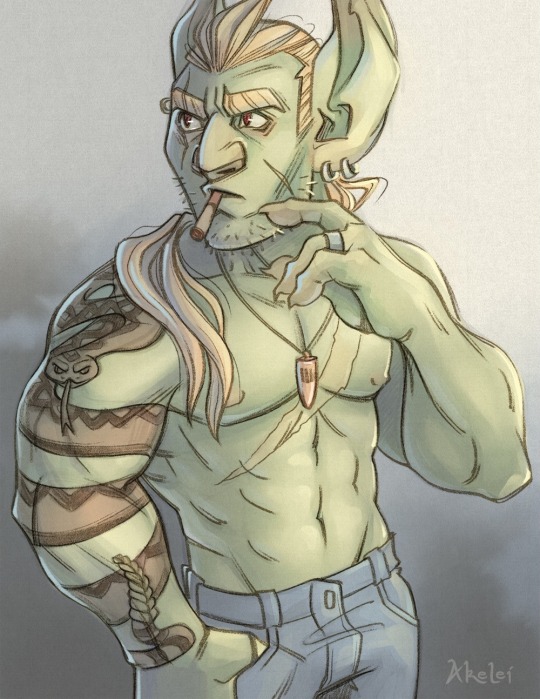
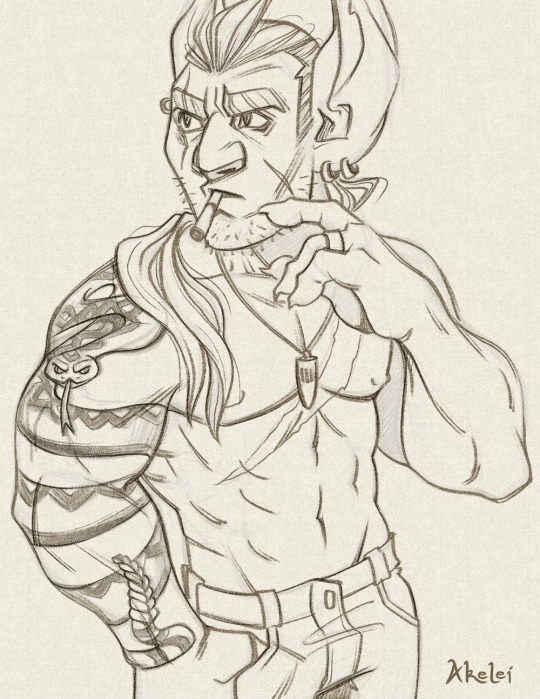
#my art#fantasy#goblin#goblins#illustration#akelei art#contemporary fantasy#akelei#akeleiart#dnd#artists on tumblr#dungeons and dragons#world of warcraft#warcraft
55 notes
·
View notes
Text
lottie n caroline icons!!! ^_^
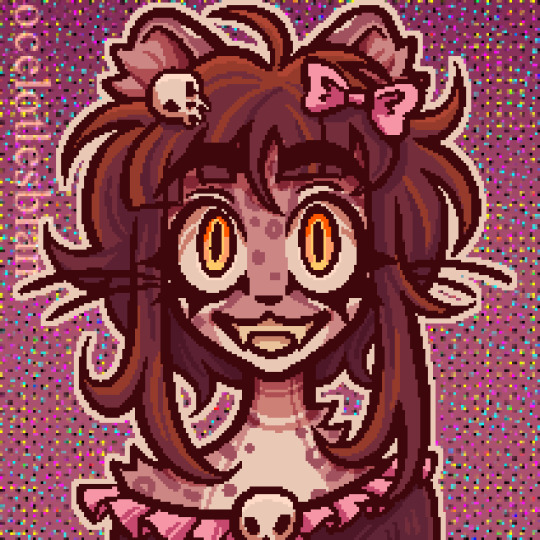

not rlly sure what i'm gonna do with these, but they're still nice to have i guess!!
for the uninformed, these are my original characters lottie akeley, a shut-in ocelot, and caroline florence, her ghost girlfriend. they're part of a story i call loving paranormally that centers around lottie finding caroline and deciding to help her move on from her shitty past life by taking her on little dates to places she'd never been able to go before. i like them a lot :3
#ocelotlesbian#paranormal lesbians#lottie akeley#caroline florence#furry#furry art#hhhhhh not sure what else to tag so i guess i'll leave it here
21 notes
·
View notes
Text
Attaining grace 7


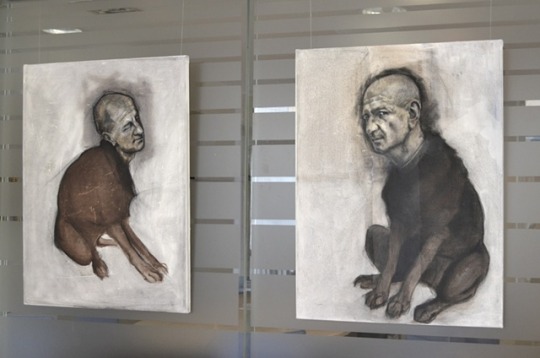






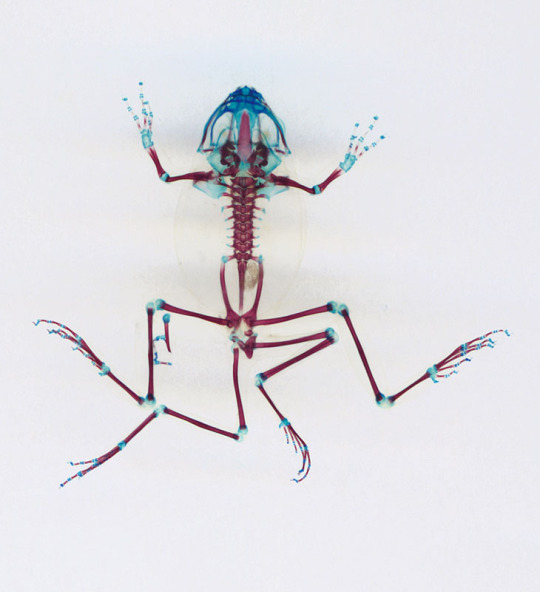
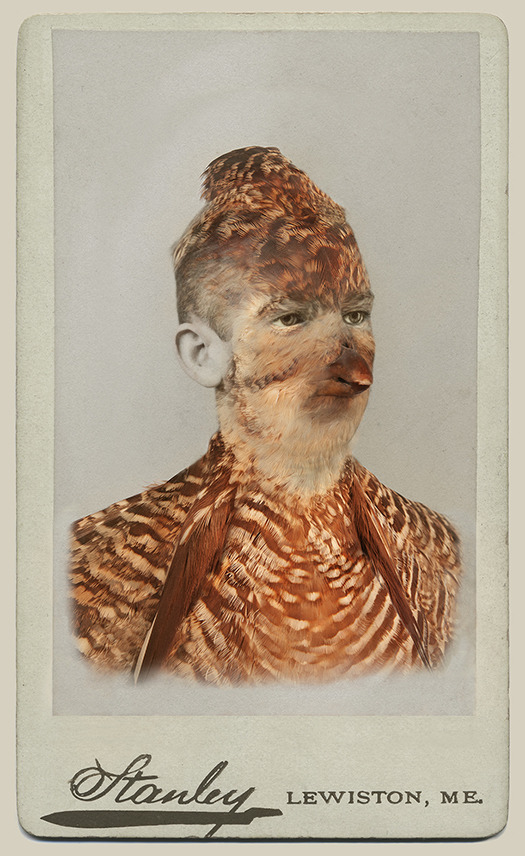


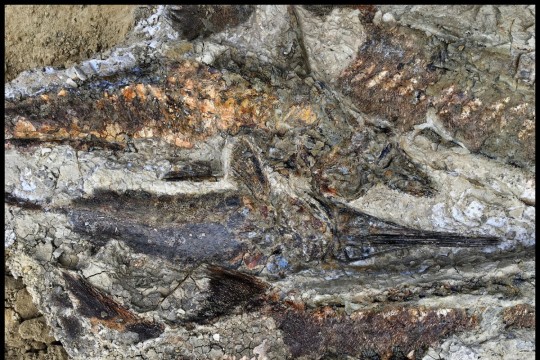
A tangled mass of fish from the deposit in North Dakota's Hell Creek formation. Photo: Robert DePalma/University of Kansas
Thirty years after Andy Warhol made a series of silkscreen prints to raise awareness of endangered species, evidence of an ongoing sixth mass-extinction event grows. Each year, Canada’s list of species at risk gets longer. A blogger at Scientific American offers an extinction countdown. Scientists provide alarming accounts and warn about “defaunation in the Anthropocence” – the elimination of wildlife from an age dominated by humans. But scientific warnings haven’t stemmed the collapse of biodiversity. Nor have well-meaning laws. Can artists open our eyes to what we are losing?
Animals were the first subjects of art, in cave paintings more than 32,000 years ago. Real and imagined creatures figure prominently in art history. Art and conservation have long been close companions: John James Audubon discovered 25 new bird species on the way to setting a new standard for wildlife illustration. Taxidermy artist Carl Akeley pioneered diorama displays for natural history museums and helped establish Virunga National Park in the Democratic Republic of the Congo to protect mountain gorillas. Artists continue to stand as society’s conscience and critics. They disrupt our complacency and broadcast calls for change. Increasingly, they are reflecting the disappearance of the animal world.
Take the pangolin, the improbable mascot of last fall’s Extinction Marathon at the Serpentine Gallery. You may never have heard of the only fully scaly mammal – the “walking pine cone,” the “artichoke with legs and a tail” – but the pangolin may be the most trafficked animal in the world. And despite an international convention prohibiting trade in endangered species, it is on the way to being eaten to extinction.
Artists are acting as agents provocateurs, forcing us to confront our kinship with other animals, to acknowledge how we are diminishing them, and to see the world as it is, was and could be.
The power of objects and images in a museum or gallery, regardless of their artistic merits, is the power of artefact. We are struck by their profound detachment from the present, and are left with a lingering sense of mystery. A fossil is any preserved remains, impression, or a trace of any once-living thing from the past. An artifact is a man-made object that has some kind of cultural significance. Such is the transmutation from fossil to artefact when it becomes the subject of wall art. Also,for most people the best studio pottery will only be seen as two dimensional photographs. Therefore, the aesthetics of this medium governs the viewers response, as do the idiosyncrasies of the curatorial presentation of originals in fixed positions
Read more about the artists and their works
0 notes
Photo
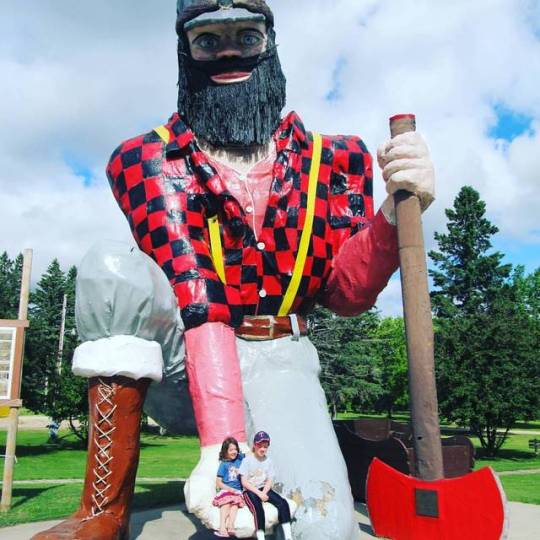
This Paul Bunyan sculpture in Akeley, Minnesota, is one of the most photographed places in our state. In 1984, local artist Dean Krotzer and his family built “The World’s Largest Paul Bunyan.” Made out of fiberglass, Paul measures 33 feet tall. Crawl up onto his hand for a photograph that you will never forget! Next to Paul, you’ll find his baby cradle. For more than 65 years, the city of Akeley has held “Paul Bunyan Days” to celebrate the birth of his legend and to attract tourists to the area. The sculpture is located just off Highway 34. #Minnesota #OnlyinMN #captureminnesota #Minnesotalife #chooseminnesota #roadsideattraction #roadside art #roadsideamerica #thisismymn #akeley #paulbunyan #mwtblogger #midwest #mwtravel #midwesttravel #midwestisbest #midwestblogger #babetheblueox #exploreminnesota #mn #minnstagrammers #roadtrip #twincitiescollective #twincitiesbloggers (at Akeley, Minnesota)
#captureminnesota#mn#onlyinmn#midwest#roadsideamerica#akeley#midwesttravel#thisismymn#roadsideattraction#midwestisbest#roadside#minnesota#minnstagrammers#twincitiesbloggers#mwtblogger#exploreminnesota#twincitiescollective#chooseminnesota#mwtravel#roadtrip#babetheblueox#midwestblogger#minnesotalife#paulbunyan
6 notes
·
View notes
Text
berlinworkshops
Workshops, Fortbildungen, Konferenzen, Buchpräsentationen und Diskussionen in Berlin
Letztes Update: 12.06.2020
Zusammengestellt von @_sibsi
Juni 2020
12.06. Pressearbeit für NGOs und Initiativen - Raus aus der digitalen Blase mit guter Pressearbeit / Heinrich-Böll-Stiftung
12.06. Advisement Day: Work Stipends for Non-German Literature / Schreiben & Leben
12. - 14.06. New Alphabet School #4 Caring
13.06. Rechtsform-Workshop: Genossenschaft oder was? / Café Sunshine Bremen
13. - 14.06. InDesign Aufbaukurs / bbk
13. - 14.06. Photoshop - Kurs (Fortgeschrittene) / bbk
13. - 14.06. Beats_Per_Minute online Projekt
13. - 14.06. Let us talk, ladiez* - Rhetoriktraining von und für Frauen*
Jugendseminar für junge Frauen* / Heinrich-Böll-Stiftung
14.06. Forum: Stefan Haupt: Kunst im öffentlichen Raum und Urheberrecht / Kunst umgehen
15.06. Online Release: Die schönsten deutschen Bücher 2020
15.06. Veröffentlichen und Verkaufen im Internet / bbk
15.06. GEMA - und GVL- Basics für Songwriter und Musiker/innen *digital / Music Pool Berlin
15.06. Monthly Meet-Up for Transnational Artists / touring artists
15. - 18.06. Online Gruppencoaching: Auf Du mit Deinen Finanzen für Brandenburger Kreative und Künstler*innen
16.06. Online-Gruppensprechstunde // Corona-Krise: Soforthilfe- und Unterstützungsmaßnahmen für Kunst, Kultur, Kreativwirtschaft / Kulturförderpunkt
16.06. SOZIALE MEDIEN für KÜNSTLER*INNEN ?!?! / bbk
16.06. Webinar: Veranstaltungsorganisation in Pandemiezeiten / Initiative Neue Musik
16.06. Digitale Szenarien für Kommunikation und Präsentation / PAP
16. + 23.06. Verändern und gestalten – Informationsveranstaltungen zu Anti-Diskriminierungskämpfen in Kunst und Kultur / PAP
17.06. Stammtisch der Proberäume zum Umgang mit Corona / PAP
17.06. Was Sie beim Umgang mit ELSTER beachten müssen / GUWBI
17.06. »Money! Money. Money? – Kulturfinanzierung in der Krise« / Facetten der Kulturarbeit e.V.
17.06. 3 Jahre die Vielen: WAS TUN?! / HAU
18.06. Let’s talk about class #3 *live-stream* / ACUD MACHT NEU
18.06. Sicher Präsentieren in der Praxis / bbk
18.06. Online Workshop on Music & Sustainability / European Music Council
18.06. Corona-Sprechstunde: Überbrückung von Einnahmeeinbußen / Berlin Music Commission
18.06. Coffee Club mit Patrick Horn von Grandfilm / Filmnetzwerk
19.06. Digitaltag
19.06. Fahrradtour: Wo fahren wir hin? Orte der Zukunft / PAP
19. - 21.06. Vierter Branchentreff Literatur: "Literatur viral"
20.06. Songwriting Basics - How To Write A Killer Song / Landesmusikakademie
22.06. YouTube Management (for Musicians) *digital* / Music Pool Berlin
22.06. 6. Jour fixe „Musik und Stadt“: Komponistinnen gestern und heute / Landesmusikrat
22. - 23.06. Das Portfolio / bbk
23.06. Verwertungs- und Nutzungsrechte im Filmbereich / Kreatives Sachsen
23.06. Corona-Krise: Soforthilfe- & Unterstützungsmaßnahmen / Kreativ Kultur Berlin
23.06. Online-Gruppensprechstunde // Corona-Krise: Soforthilfe- und Unterstützungsmaßnahmen für Kunst, Kultur, Kreativwirtschaft / Kulturförderpunkt
24.06. Förderrichtlinie zur digitalen Entwicklung des Kulturbereichs / Kulturförderpunkt
24.06. Zoom Konferenz - Die Meldungen an die VG Bild-Kunst / bbk
24.06. Beratungstag: Agentur- und Verlagssuche / Schreiben & Leben
24.06. Postcorona-Soziokultur / Bundesverband Soziokultur
25.06. Commons & Kommerz auseinander halten. Aber wie? / Café Sunshine Bremen
25. - 26.06. Videos und Kurzfilme für Instagram + Co / bbk
26.06. Informations-Veranstaltung zum Umgang mit Corona / PAP
26.06. OPEN CALL - Artist Training Music Collectives / UdK
26. - 28.06. SIEBDRUCK SUPER CRASHKURS / bbk
27.06. Procreate - Zeichnen auf dem iPad / bbk
27.06. Micromondi - Workshop di Illustrazione all’aperto
27. - 28.06. Moderation im Kontext rechter und rassistischer Positionen / Heinrich-Böll-Stiftung
28.06. Procreate - Pinsel und Leinwände selber erstellen / bbk
29.06. How to edit an art book / bbk
29.06. Residenzstipendien / bbk
29.06. How to get the most out of Spotify *digital* / Music Pool Berlin
30.06. The Codes of the Art World - GROUP COACHING FOR FOUR PROFESSIONAL ARTISTS / bbk
30.06. Online-Gruppensprechstunde // Corona-Krise: Soforthilfe- und Unterstützungsmaßnahmen für Kunst, Kultur, Kreativwirtschaft / Kulturförderpunkt
30.06. Webinar: Digitale Künste und digitale Formate / Kulturpolitische Gesellschaft
30.06. + 07.07. Selbstvermarktung für Künstler*innen / bbk
30.06. + 01.07. + 02.07. Accounting, Price Calculation and Taxes as a Freelancer (Set of 3 Seminars) / GUWBI
Juli 2020
01.07. »Money! Money. Money? – Kulturfinanzierung in der Krise« / Facetten der Kulturarbeit e.V.
01.07. Film x Music – On Collaborations between Filmmakers and Musicians / Music Pool Berlin, Filmnetzwerk, Kulturförderpunkt
02.07. WORKING and YOUR WORK / bbk
03.07. Informations-Veranstaltung zum Umgang mit Corona / PAP
03. - 05.07. Cyanotypie / bbk
04. - 05.07. Einführungskurs Animation Blender 3D 2.8 - Freeware & Open Source / bbk
06.07. HOW TO - Onlinepräsenz KOMPAKT mit individuellem Coaching / bbk
07.07. Understanding the Contemporary Art Scene: Communication & Public Relations for Artists / bbk
09. - 10.07. Why - What - How / bbk
13. - 14.07. Your Portfolio / bbk
14.07. How to pitch your art / bbk
16.07. Das Auftragssystem der Kunst im öffentlichen Raum – Wettbewerbe, Jurys, Chancengleichheit / bbk
19.07. Überblick: Kunst und halböffentliche Räume / Kunst umgehen
20.07. Wie kommt das Geld zur Kunst? / bbk
21. & 28.07. PROMOTING YOUR PHOTOGRAPHY IN THE ART WORLD - How to Sell Photographs / bbk
23.07. Texte als Bestandteil des künstlerischen Profils / bbk
24.07. Niemand kommt Festival
24. - 26.07. Einführung in den 3D DRUCK mit BLENDER 3D 2.8 / bbk
24. & 26. - 27.07. Einführungskurs Blender 3D 2.8 / bbk
27.07. Ein Werkverzeichnis anlegen / bbk
30.07. Publizieren für Künstler*innen – der eigene Katalog / bbk
August 2020
04.08. Grundlagen der Buchführung / Steuererklärungen selbst erstellen / bbk
07. - 09.08. After Effects - Crashkurs - Anfänger / bbk
10.08. Videos mit dem iPhone produzieren und veröffentlichen / bbk
11.08. Das iPhone als Videoschnittplatz / bbk
13.08. Nimm was dir zusteht: Die VG Bild-Kunst / bbk
17.08. Monthly Meet-Up for Transnational Artists / touring artists
20.08. Die Kunst des Netzwerkens / bbk
21. & 28.08. KUNSTKRITIK und DIALOG – Potenziale, Ansätze und Strategien / bbk
22. - 23.08. Grundlagen der Videobearbeitung mit Premiere CC (MAC & PC) / bbk
29. - 30.08. KUNST & GELD / bbk
September 2020
05. - 06.09. After Effects - Fortgeschrittene / bbk
10.09. Deine ONLINE Präsenz. Website realisieren – aber wie? / bbk
22.09. Strategie und Praxis im Kunstmarkt - Individualisierter Galerierundgang / bbk
24. - 25.09. Crash Course: Sketchup / bbk
Oktober 2020
02. - 04.10. Crashkurs Photogravure / bbk
10. - 11.10. Klangerzeugung für Film, Audiokunst, Live-Performance und Komposition / bbk
25.10. Einführungskurs 2D Animation - Zeichentrickfilm mit Blender 3D - kostenlos & Open Source / bbk
27.10. Business Startup Seminar - تأسيس شركة خاصة للموسيقيين / Landesmusikrat
31.10. - 01.11. Ableton LIVE und Cubase / bbk
November 2020
07.11. Einführung in den 3D DRUCK mit BLENDER 3D 2.8 / bbk
Beratungsstellen und Verbände:
Suchmaschine/Datenbank: Beratungsnetz Migration
AGD Allianz deutscher Designer / Design macht: Business
agitPolska e. V. - Polnisch-Deutsche Initiative für Kulturkooperation
Akelei - Berufswegplanung mit Frauen
Art Grant Clinic - Workshops & Beratungen zu Förderantragen
AURORA - School for ARtists (Augmented Reality-Kurse)
AWO
Bandbüro
bbk - Büro für Künstler*innen-Beratung
BEMA - Berliner Beratungszentrum für Migration und Gute Arbeit
Beratungsstelle beim Berliner Integrationsbeauftragten
BER-IT berät Frauen zu den Themen Berufsorientierung, berufliche Weiterbildung und berufliche Perspektiventwicklung.
Berlin Music Commission - Sprechstunde Musikwirtschaft
Berliner Stadtmission - Clearingstelle für nicht Krankenversicherte
Box66 - für Migrantinnen
ClubConsult - Club- und Veranstalterberatung
COOPOLIS - Creative Support
Creative Service Center / WeTek Berlin gGmbH
Crowdfunding Berlin
Dachverband Tanz
Dance Passport
Deutsche Medien- & Künstlerberatung (KSK etc.)
FAU - Sektion Kultur und Medien (unabhängige Basisgewerkschaft)
Filmnetzwerk
Goldrausch Künstlerinnenprojekt
Gründen in Berlin
Gründerinnenzentrale
GUWBI e.V. - Orientierungsberatung für Existenzgründer*innen
Hartzer Roller - Hartz IV
IGBK - Internationale Gesellschaft der Bildenden Künste
I.S.I e.V. - Initiative Selbständiger Immigrantinnen
ITI - Deutsches Zentrum des Internationalen Theaterinstituts
Kontakt- und Beratungsstelle für Flüchtlinge und Migrant_innen e. V. (KuB)
Kreativnetz Neukölln
Kreativwirtschaftsberatung Berlin
Kulturförderpunkt Berlin
Kultur Mitte - Mobile Beratung
Landesmusikrat Berlin - Information über den Berliner Musikarbeitsmarkt - persönliche Beratung und Begleitung
La Red - Beratung für Migranten und Migrantinnen in Berlin bei der Ankunft in Deutschland
Literaturszene Berlin / Schreiben & Leben
LOK - Unterstützung bei der Existenzgründung
Lotsenstelle für migrantische Selbstständigkeit (Guwbi e. V.)
Lots*innen in die freie Szene Berlin
mediafon - ver.di-Beratung für Solo-Selbständige
Music B Women - Beratung für Frauen in der Musikwirtschaft
Music Pool Berlin - Orientierungsberatung (Mi + Fr)
Netzwerk freie Literaturszene Berlin
Orientierungsberatung zur Existenzgründung / Bezirksamt Treptow-Köpenick (Di)
Performing Arts Program (PAP)
Rechtsberatung in der Ausländerbehörde
Smart - Genossenschaft für Selbstständige
Sprachcafé: Learn or teach German - Refugio Sharehaus
Step By Step - Existenzgründungsseminare
Stiftung TANZ
Tanzbüro Berlin
touring artists - internationale Mobilität
UdK Artist Training for Professionals
Unternehmen Neukölln
Vielfalt gründet - kulturspezifische Seminare
VUT-Mentoring-Programm für Frauen in der Musikwirtschaft
Willkommenszentrum Berlin der Senatsverwaltung für Integration, Arbeit und Soziales
Wirtschaftsförderung Treptow-Köpenick
Women’s Film Network Berlin
Xochicuicatl e. V. - Asociación de mujeres latinoamericanas en Berlín
Übersicht über berlinweite Veranstaltungen für Gründerinnen und Unternehmerinnen via Gründerinnenzentrale (ganz unten auf der Seite)
3 notes
·
View notes